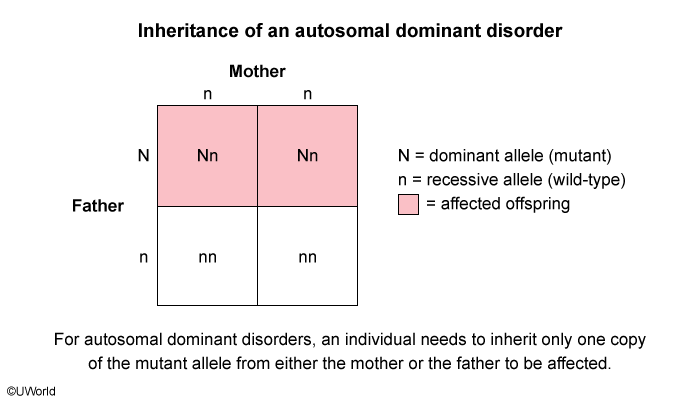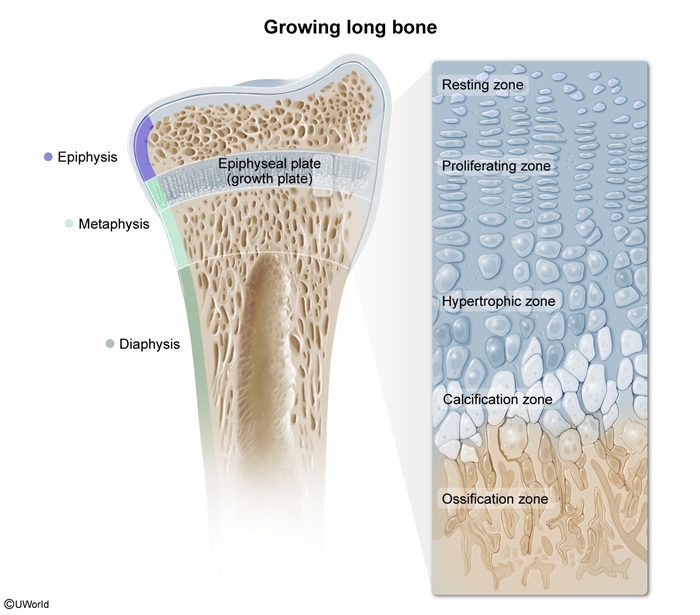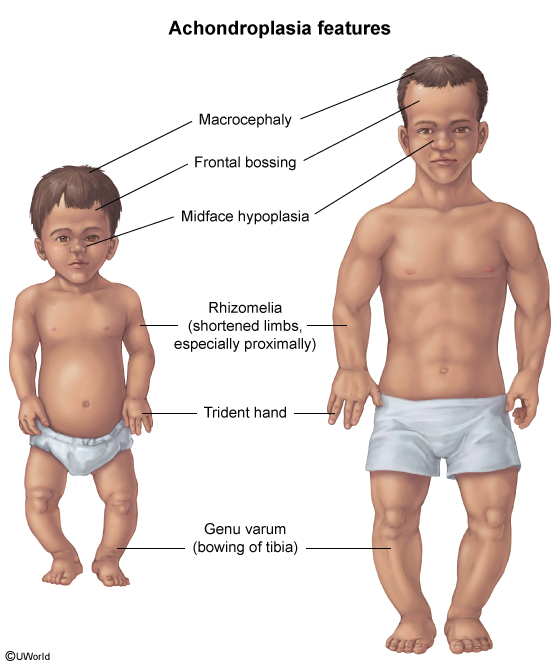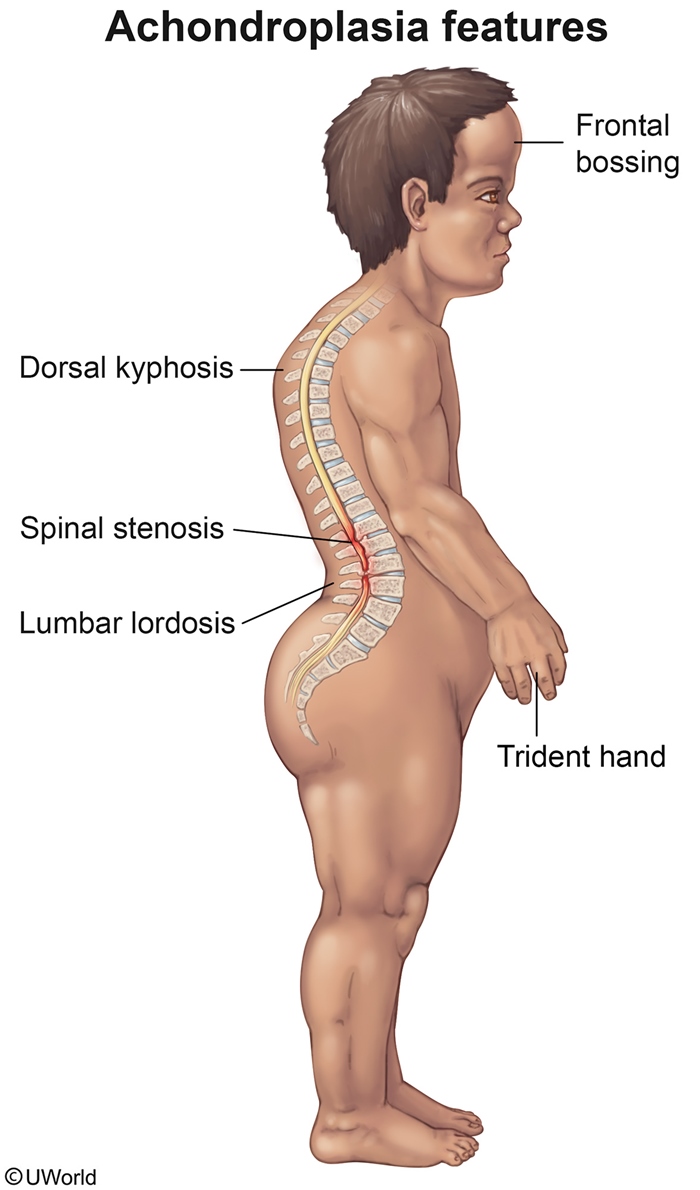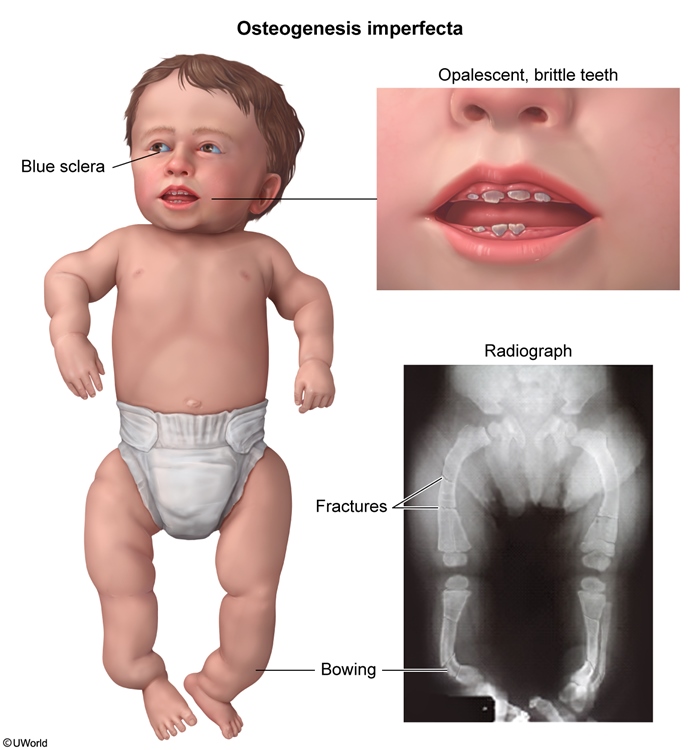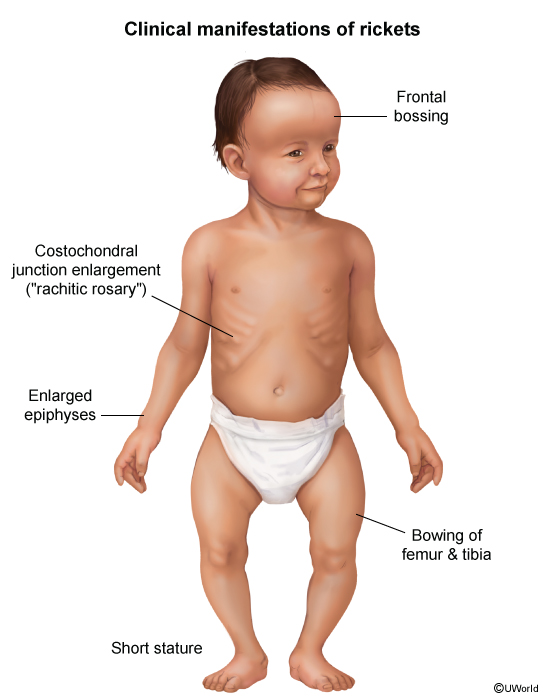Achondroplasia
Article Sections
Introduction
Achondroplasia is a skeletal dysplasia caused by a mutation in the fibroblast growth factor receptor 3 (FGFR3) gene that results in decreased endochondral ossification. Most mutations are de novo, but achondroplasia can also be inherited in an autosomal dominant manner. Patients have a short stature with disproportionately short arms and legs as well as craniofacial abnormalities (eg, macrocephaly, frontal bossing, midface hypoplasia).
Genetics and risk factors
Achondroplasia is the most common type of skeletal dysplasia. It is an autosomal dominant condition that can occur as a de novo mutation or can be inherited:
- De novo mutation (80% of cases): Advanced paternal age increases the risk for a sporadic mutation due to increased DNA replication errors during spermatogenesis.
- Inherited mutation (20% of cases): Inheritance of a single mutant allele causes the disorder; therefore, if one parent is affected, 50% of children will inherit the condition (
Continue Learning with UWorld
Get the full Achondroplasia article plus rich visuals, real-world cases, and in-depth insights from medical experts, all available through the UWorld Medical Library.
Figures
